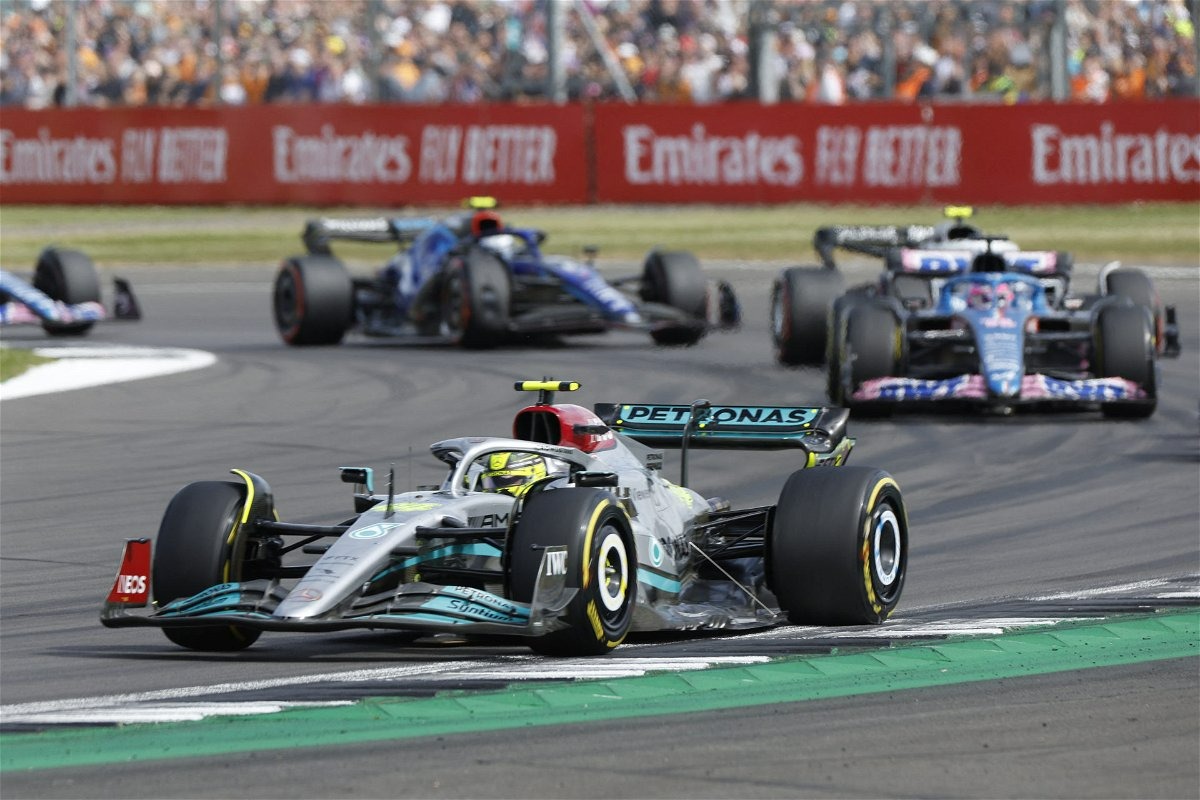
I have said this before and I will say it again. Silverstone, the home of the British Grand Prix, is a tale as old as time. The magical circuit is an enigma in itself where one can see racing at it is best. The cars get into a flow state and steer around the most iconic corners and straights of the F1 calendar. One of them is even named after an active driver from the grid. Any guesses? It is none other than Lewis Hamilton, who was also bestowed knighthood in 2021. But what makes the track so special? The answer to this almost rhetorical question is in the corners, straights, and history.
Famous corners of the Silverstone circuit including the [Lewis] Hamilton Straight
Each of the 18 corners of the historic, 5.8 km long circuit has names and history attached to it. When the authorities ran out of corners to name, they named the start/finish straight after F1’s most successful driver, who happened to be their own. It was Lewis Hamilton. The race begins as the drivers race flat out towards Abbey (Turn 1) named after the ancient Luffield Abbey, the remains of which were found near the corner. The grid then proceeds towards the Farm [Turn 2], Village [Turn 3] named after Silverstone Village, which lies to the north of the circuit, and The Loop [Turn 4].

Now this is where it gets interesting for the Silverstone circuit. Aintree [Turn 5], was famous for hosting the Grand National horse race, for five years in the late Fifties and early Sixties, Aintree also staged the British Grand Prix. Hence the name. The next one is the Wellington Straight, which is one of the two DRS zones named after Wellington bombers who were based at the Northamptonshire circuit during World War II. Brooklands [Turn 6], Luffield [Turn 7], Woodcote [Turn 8], Copse [Turn 9]. Then come the famous Maggotts, Becketts, and Chapel [Turns 10-14], which is one of the most iconic in Formula 1. Maggotts pays tribute to the nearby Maggot Moor. Becketts and Chapel pay tribute to the chapel of St Thomas à Beckett, which was demolished in 1943 so that the airfield could be built. Then comes the Hanger straight, which is taken at 325km/h these days. Famous Stowe [Turn 15] is named after Stowe School, which lies just south of the circuit. Vale [Turn 16], Club [Turn 17/18] just like Woodcote, Club, now the track’s final corner, was named in honor of the RAC’s famous clubhouse in Pall Mall, London. Phew!!! That was some run down. But the iconic corners aren’t the only element that makes the race so special.
What makes the Silverstone circuit so historic?
The circuit has hosted 52 world championship rounds since the first one in 1950. Britain has the richest history in F1 as the nation has produced 10 world champions in the likes of Nigel Mansell, Damon Hill, Jenson Button, and even a non-champion driver like Sir Stirling Moss, often called the greatest driver never to win the World Championship is a part of the heritage. However, the king of the circuit remains Lewis Hamilton. Hamilton has won his home GP for a record number of times [8]

On the current grid as well, it is a home race for three drivers, including George Russel and Lando Norris. But that is not all. It is even home to multiple teams. Mercedes, Red Bull, Haas, Williams, Renault, and McLaren are all a relatively short drive from the British GP but most importantly Aston Martin’s headquarters is just a stone’s throw away. This makes the fans of this circuit the most special ones. A three-day almost camping event which is are serious race day by day time turns into a music festival at night. Lewis Hamilton has often appreciated the fans here, often crediting him for his impeccable form around the circuit. Might I remind you that this is the same place where Lewis won a race on three tires in 2020.